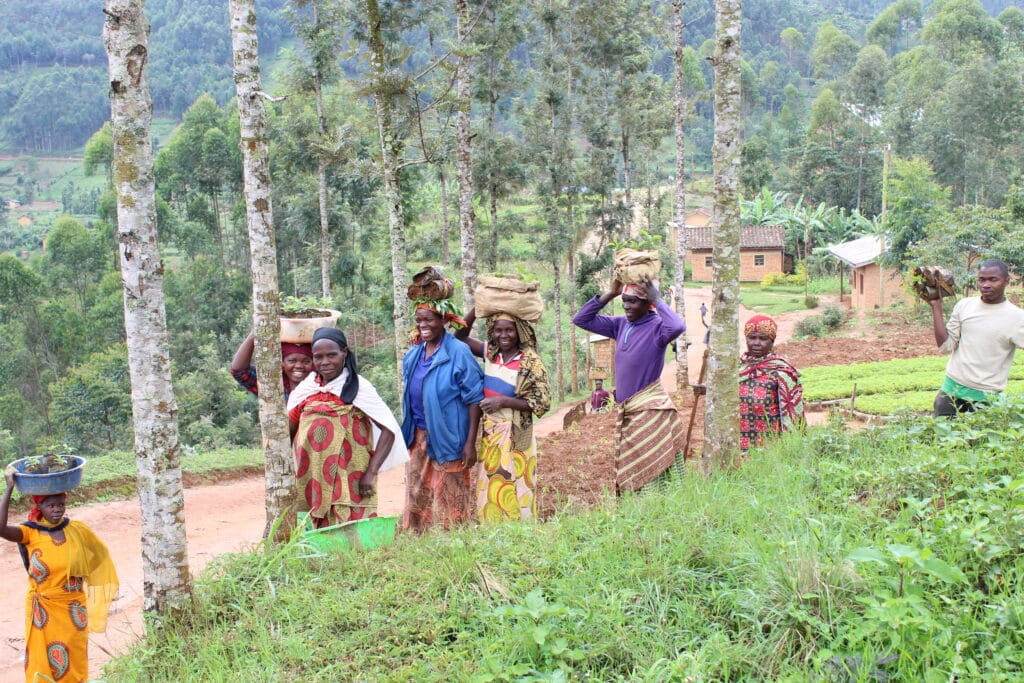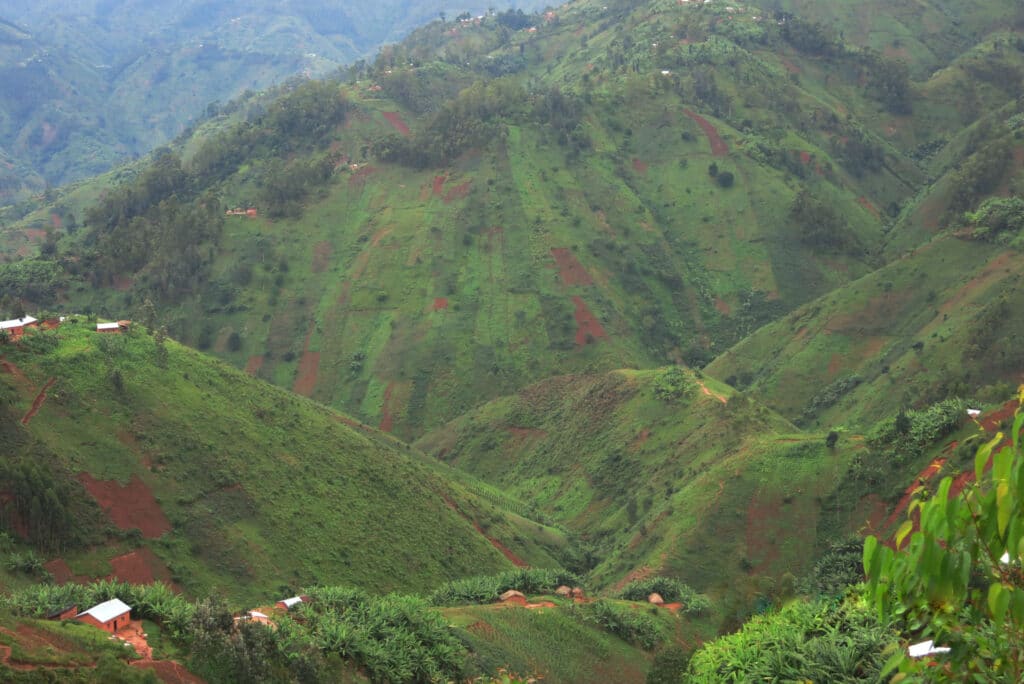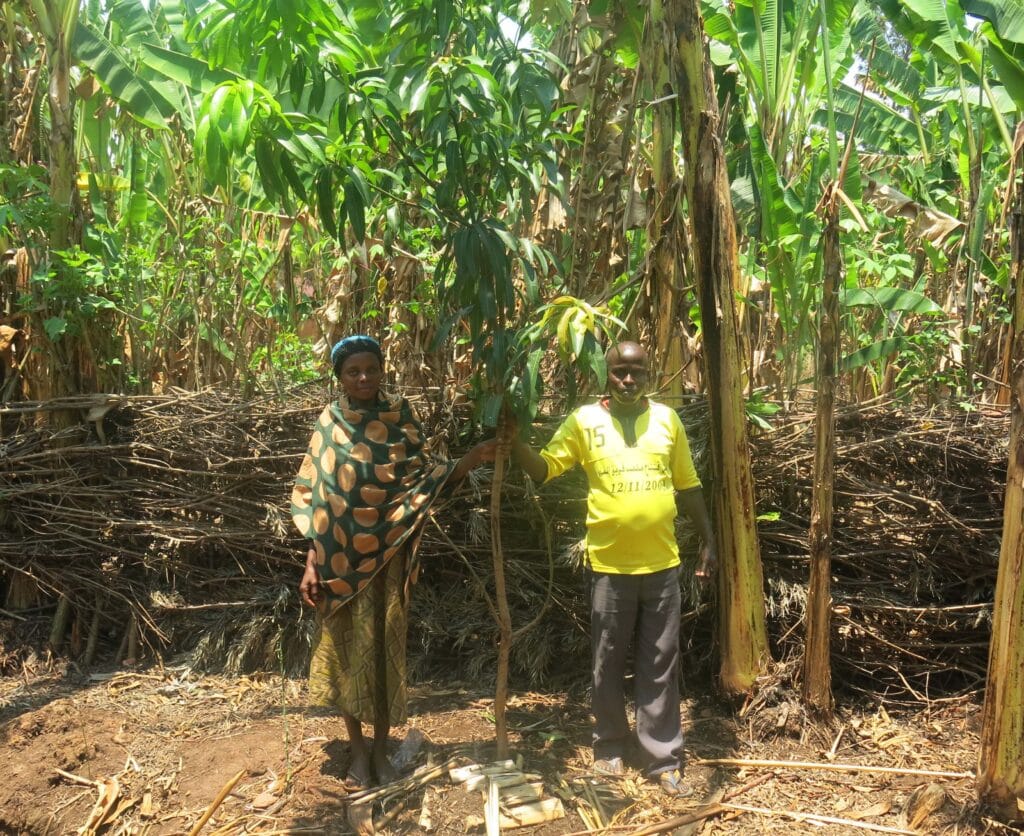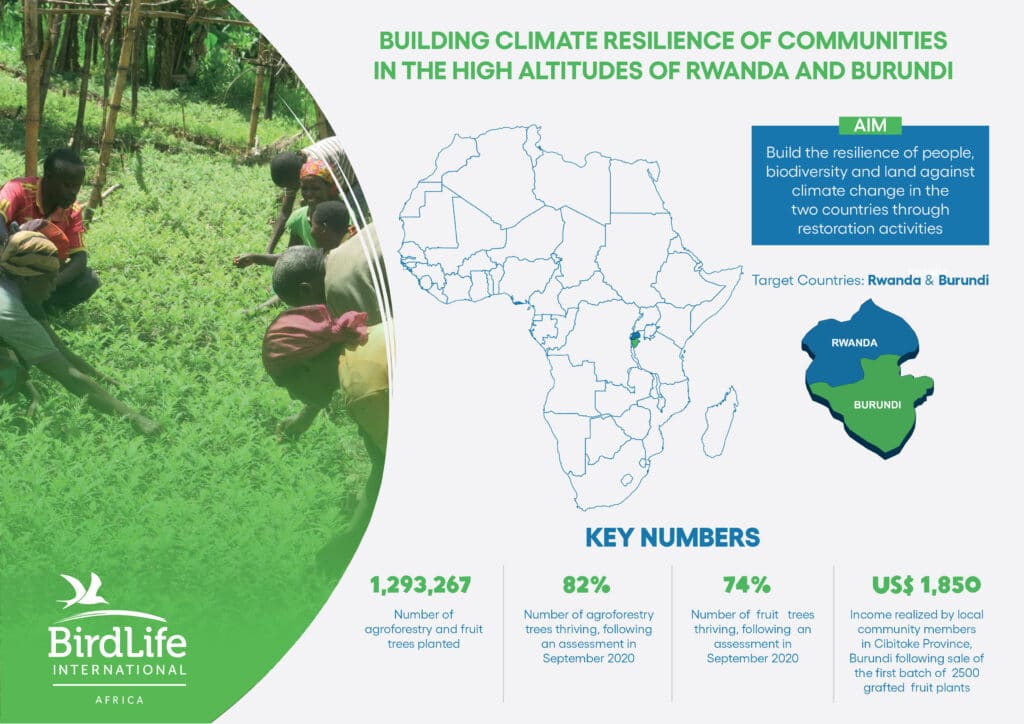2 Years On: Counting the gains of climate change action in Burundi and Rwanda

From 2017-2020, BirdLife International carried out a project to help build the resilience of people, biodiversity and land against climate change in the two countries. While the project may have drawn to a close, its legacy is long‑lasting...
By Lewis Kihumba
Mpawenimana Kidaga is all smiles as he briskly tends to his fruit trees on his land, in the sun soaked landscape of Ruvyimvya Hill in southwestern Burundi. Across the landscape, fruit trees, intercropped trees and food crops dot the areas. “We will have a good harvest this season”, remarks Kidaga.
This has not always been the case. Across East Africa, climate change continues affecting local communities in Rwanda and Burundi. Over the years, intensive agriculture, and small scale mining have eroded the soil around the Lake Kivu and Rusizi River basins. The basins’ high altitude landscapes with minimum elevation of 1,000 metres above sea level are connected to the tropical montane rain forests, which are critical water towers. Increasing erosion rates, especially in the rainy season, led to increased sedimentation, water pollution, subsequently leading to a reduction in agricultural and fishing yields, for local communities.
From 2017-2020, BirdLife International carried out a project to help build the resilience of people, biodiversity and land against climate change in the two countries. Supported by the MacArthur Foundation and The Nature Conservancy (TNC) and working with the Association Burundaise pour la protection de la Nature (ABN) (BirdLife Partner in Burundi) and government agencies responsible for environment, forestry and agriculture in Rwanda, the project aimed at helping local communities safeguard their land against climate change and boost their ability to cope through diversified livelihood sources.

A key aspect was to identify community risk to climate change, and craft adaptation plans prioritizing areas with the greatest need for restoration from soil erosion and land degradation. Local communities in both countries established tree nurseries and planted a total of 1,293,267 agroforestry and fruit trees. Agroforestry trees help bind the soil, while the fruit seedlings provide food and income for the local communities.
“The local communities are greatly affected by land degradation. With the right support, they can participate in land restoration and become more resilient to the effects of climate change. The project demonstrated this by helping the local communities of Murwi and Mugina in Cibitoke Province to produce more than 800,000 agroforestry tree seedlings to restore their land after the climate change vulnerability assessment”, notes Joseph Bizimungu, ABN’s Executive Director.
The project has improved our lives and our land. We learnt how to take care of the soil by having useful trees. The trees are improving the soil in our farms and river banks, and we now have additional income through selling mangoes, tree tomatoes and other fruits in the market.Mpawenimana Kidaga
“The project has improved our lives and our land. We learnt how to take care of the soil by having useful trees. The trees are improving the soil in our farms and river banks, and we now have additional income through selling mangoes, tree tomatoes and other fruits in the market “,says Kidaga.
An assessment in September 2020 showed that 82% of agroforestry trees and 74% of fruit trees had survived and were thriving, a particularly high success rate for such projects.
“The climate resilience project in Burundi and Rwanda is an example of how a combination of science and community approaches can help find solutions to challenges brought about by detrimental impacts of climate change. The experience gained by local communities will be available for a very long time and restored landscapes will continue to provide vital ecosystem services. We are grateful for the support we received from government agencies in the two countries”, notes Ken Mwathe, Policy and Communications Coordinator, BirdLife International, Africa.
Additionally, Kidaga and local community members have improved their livelihoods through knowledge acquired from the project. “After training by ABN, we formed a small group of 15 people to put into practice what we learnt. We started grafting the fruit plants to sell the improved plants. Initially, we were able to produce 5,000 plants and customers soon came to buy the first batch of 2,500 plants for BIF 3,750,000, (US$1,850) This income has enabled us to meet some basic needs such as buying clothes for our families, sending our children to school and buying livestock “, Kidaga further adds.
While the climate resilience building project may have drawn to a close in Burundi and Rwanda, its legacy is long-lasting. The trees will continue protecting the land for years to come while local communities’ livelihoods have improved. BirdLife and partners in the two countries are exploring how lessons from the project can be scaled up in countries facing similar challenges. “We are very grateful to ABN and BirdLife for designing and implementing this project with us. Our living conditions have improved,” Kidaga concludes with a smile.




